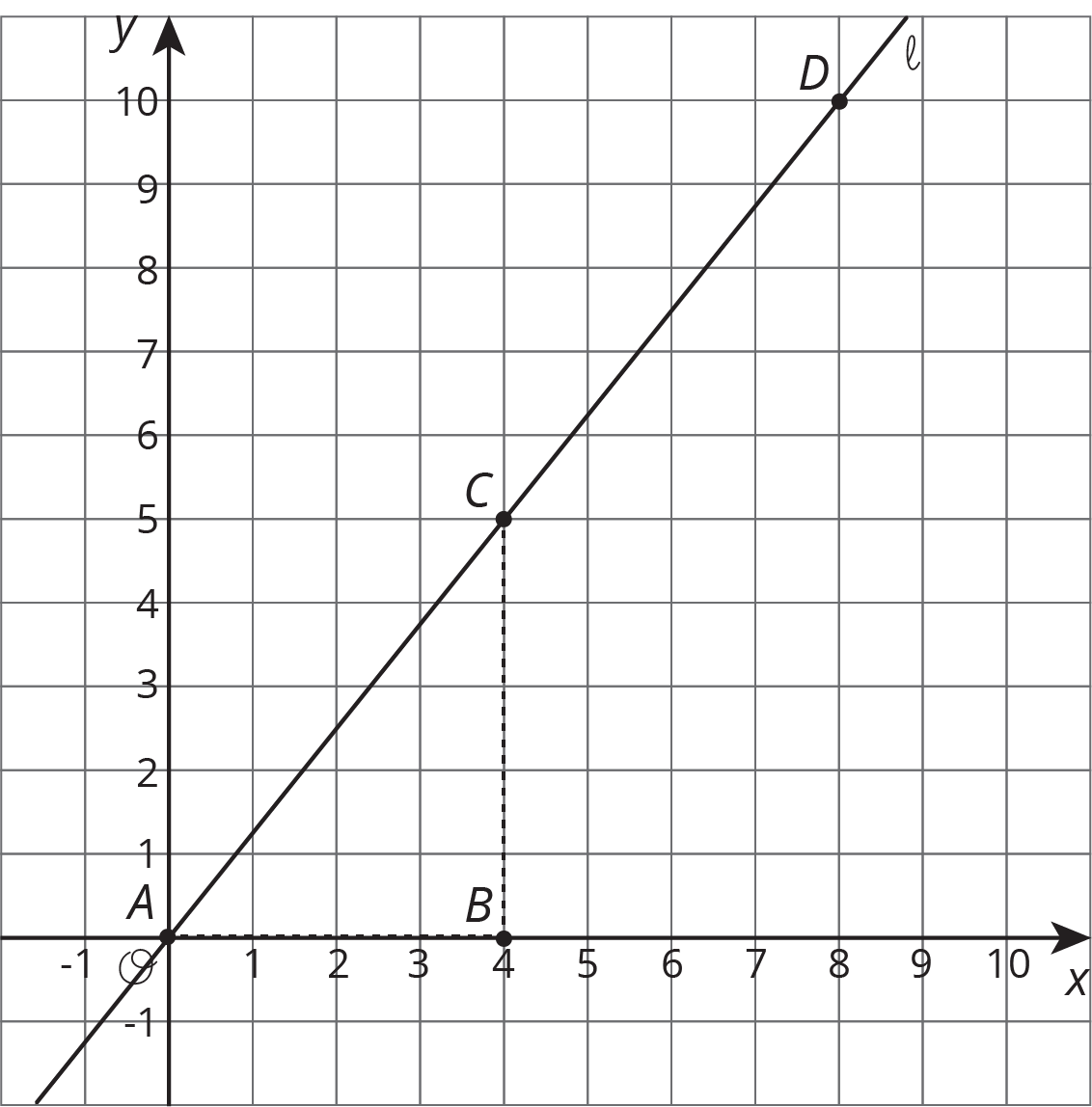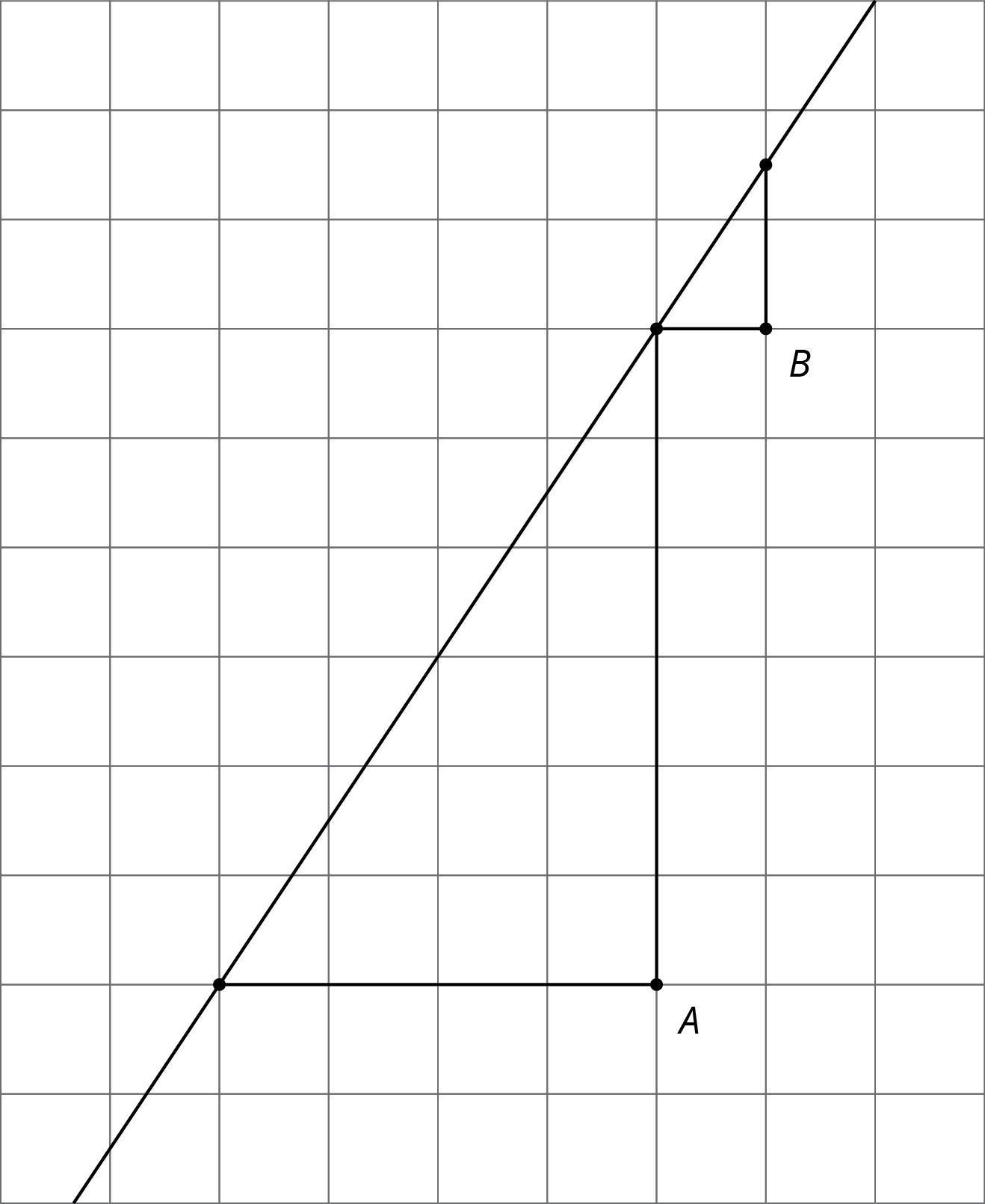Lesson 11
Writing Equations for Lines
Problem 1
For each pair of points, find the slope of the line that passes through both points. If you get stuck, try plotting the points on graph paper and drawing the line through them with a ruler.
- \((1,1)\) and \((7,5)\)
- \((1,1)\) and \((5,7)\)
- \((2,5)\) and \((\text-1,2)\)
- \((2,5)\) and \((\text-7,\text-4)\)
Solution
For access, consult one of our IM Certified Partners.
Problem 2
Line \(\ell\) is shown in the coordinate plane.
- What are the coordinates of points \(B\) and \(D\)?
- Is the point \((16,20)\) on line \(\ell\)? Explain how you know.
- Is the point \((20,24)\) on line \(\ell\)? Explain how you know.
- Is the point \((80,100)\) on line \(\ell\)? Explain how you know.
- Write a rule that would allow you to test whether \((x,y)\) is on line \(\ell\).

Solution
For access, consult one of our IM Certified Partners.
Problem 3
Consider the graphed line.
Mai uses Triangle A and says the slope of this line is \(\frac{6}{4}\). Elena uses Triangle B and says no, the slope of this line is 1.5. Do you agree with either of them? Explain.

Solution
For access, consult one of our IM Certified Partners.
Problem 4
A rectangle has length 6 and height 4.
Which of these would tell you that quadrilateral \(ABCD\) is definitely not similar to this rectangle? Select all that apply.
\(AB=BC\)
\(m{\angle ABC}=105^\circ\)
\(AB=8\)
\(BC=8\)
\(BC=2 \boldcdot AB\)
\(2 \boldcdot AB=3 \boldcdot BC\)
Solution
For access, consult one of our IM Certified Partners.
(From Unit 2, Lesson 7.)